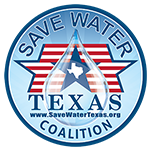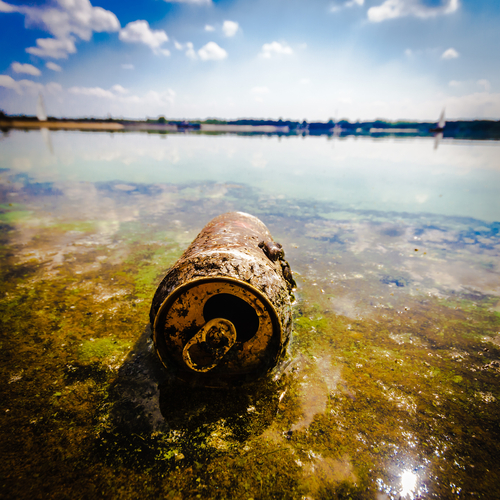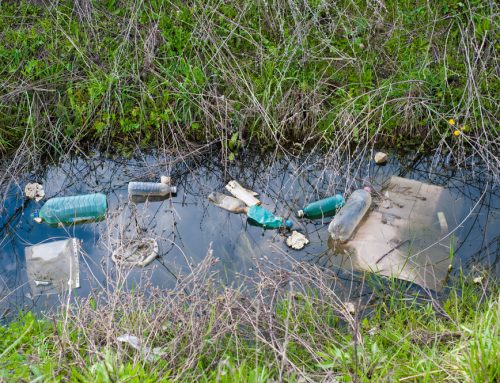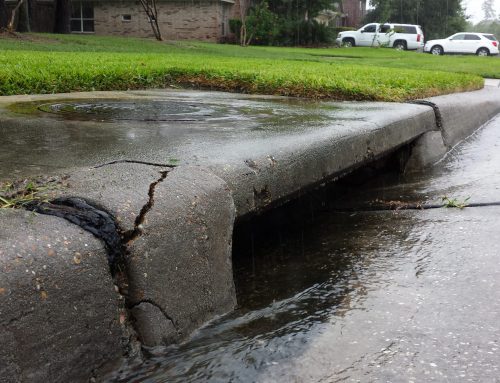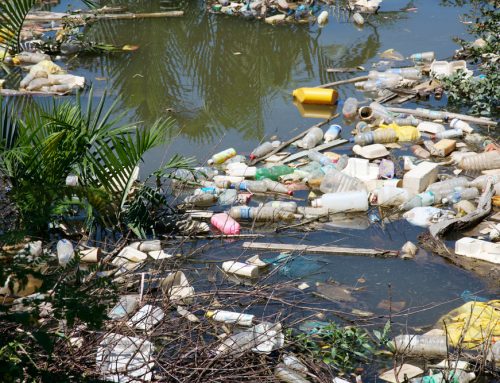Rainwater either seeps into the ground or “runs off” to lower areas, flowing into streams, lakes and other bodies of water. On its way, runoff water can pick up and carry many substances that pollute water. Some of these substances — pesticides, fertilizers, oil and soap suds — can be harmful even in small quantities. Other materials — such as sediment from construction or bare soil, runoff from agricultural land, pet waste, grass clippings and other yard debris — can harm creeks, rivers and lakes when they are present in sufficient quantities.
Various human activities like lawn watering, car washing, and malfunctioning septic tanks can also end up in the storm sewer.
Why should I care about it?
Once the rainwater runoff carries pollutants to the nearest body of water, it rushes on — untreated — to creeks, rivers, water reservoirs, and lakes where it can harm fish and wildlife, kill native vegetation, negatively impact rec-reational waterways, and contaminate sources of drinking water.
What can homeowners and Landscapers do to help avoid or prevent this pollution?
Start with the most obvious thing: NEVER use storm drains as waste receptacles.
- NEVER pour, blow or sweep lawn care products (pesticides, fertilizers), lawn debris (leaves, plant and grass clippings), pet waste into the storm drain openings.
- NEVER wash fertilizer spills into the street or onto other hard surfaces where they will ultimately be washed off into the storm drain.
- NEVER apply lawn care products while it is raining or about to do so. And, for the same reason, do not over-water after applying lawn chemicals. Always follow manufacturer’s instructions.
- Use a broom to sweep debris off hard surfaces — such as driveways and streets and around storm drains. Using a hose not only wastes water, but it will wash more pollutants into the drain.
- NEVER blow or sweep grass clippings into the street; when it rains, anything left in the street washes into the drains. Blow grass clippings back onto the lawn — where they become a natural fertilizer — or add them to the compost pile.
What are “sustainable infrastructure techniques” and how can they help?
These techniques involve substituting alternatives to areas traditionally covered by nonporous surfaces. Grasses and natural ground cover, for example, can be attractive and practical substitutes for paved driveways, walkways, and patios. Some homes effectively incorporate a system of natural grasses, trees, and mulch to cut down on the paved surface area.
Consider constructing wooden decks, gravel or brick paths, and rock gardens to keep the natural ground cover intact and allow rainwater to slowly seep into the ground. This acts as a natural filtering process and reduces harmful water quality impact from rainfall that carries chemicals and pollutants with it into storm sewers and retention ponds, and eventually into nearby streams and lakes.
Creating a rain garden in a shallow depression in the yard — planted with native flowers and grasses — can also make good use of rainwater runoff.
When stormwater falls on hard surfaces like roads, roofs, driveways and parking lots, it cannot seep into the ground, so it runs off to lower areas. To give you an idea of the impact a hard surface makes, consider the difference between one inch of rain falling onto a meadow and the same amount falling onto a parking lot. The parking lot sheds 16 times the amount of water that a meadow does!
The U.S. Environmental Protection Agency (EPA) warns that Storm-water Runoff Pollution may well be the biggest single threat to the quality of our drinking water.
